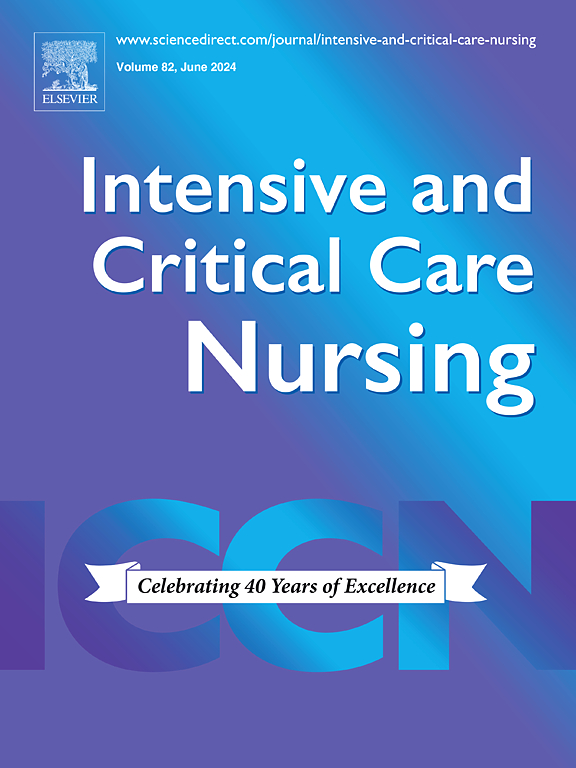科特的 8 步变革模式改善重症监护病房手部卫生依从性:为期 41 个月的前瞻性纵向质量改进研究。
IF 4.9
2区 医学
Q1 NURSING
引用次数: 0
摘要
背景:尽管有许多研究评估了旨在提高手部卫生依从性(HHC)的捆绑干预措施,但依从率仍处于不理想的水平。我们的目标是采用科特变革模型(KCM)来提高手卫生依从性,并对重症监护病房(ICU)内的医务人员进行全面的过程评估:方法:2018 年 3 月至 2021 年 8 月,武汉大学中南医院 ICU 实施了 KCM,对 HHC 进行了为期 41 个月的纵向监测。主要结果是 HHC 的绝对月变化。次要结果包括不同阶段的HHC特征、不同手卫生机会和职业的HHC变化趋势、中心静脉相关血流感染(CLABSI)和导管相关尿路感染(CAUTI)的季度发病率:这项研究包括 20,222 次手卫生行动和 24,195 次机会。总体 HHC 为 83.58 %(95 %CI,83.11 %-84.04 %)。实施 KCM 后,HHC 从 35.71 %(95 % CI,22.99 %-50.83 %)飙升至 87.75 %(95 % CI,85.53 %-89.67 %),显著增加了 145.73 %。HHC 的增长速度最快,从接触病人后的 35.29% 上升到 89.8%。尽管患者人数和治疗复杂性每年都在增加,但 CLABSI(0 ‰-3.53 ‰)和 CAUTI(0.96 ‰-4.26 ‰)的季度发生率始终保持在较低水平:结论:利用 KCM 系统性地改变了医疗服务提供者对手卫生的认识,营造了一种倡导并维持 ICU 人员改善手卫生的环境:科特变革模型可以作为医疗机构的有效框架,系统地改善和维持医疗服务提供者的手部卫生依从性,进而帮助减少医疗相关感染。本文章由计算机程序翻译,如有差异,请以英文原文为准。
Kotter’s 8-step change model to improve hand hygiene compliance in intensive care unit: A 41-month prospective longitudinal quality improvement study
Background
Despite numerous studies assessing bundled interventions to enhance hand hygiene compliance (HHC), compliance rates persist at suboptimal levels. Our objective was to employ Kotter’s Change Model (KCM) to enhance HHC and conduct a comprehensive process evaluation among medical staff within the intensive care unit (ICU).
Methods
KCM was implemented at the ICU of Zhongnan Hospital of Wuhan University from March 2018 to August 2021, with a 41-month longitudinal monitoring of HHC. The primary outcome focused on the absolute monthly change in HHC. Secondary outcomes encompassed the HHC characteristics across different phases, varying trends in HHC concerning different hand hygiene opportunities and occupations, quarterly incidences of central line-associated bloodstream infections (CLABSI) and catheter-associated urinary tract infections (CAUTI).
Results
This study included 20,222 hand hygiene actions and 24,195 opportunities. The overall HHC was 83.58 % (95 %CI, 83.11 %-84.04 %). Following the KCM implementation, HHC surged from 35.71 % (95 % CI, 22.99 %–50.83 %) to 87.75 % (95 % CI, 85.53 %–89.67 %), reflecting a notable increase of 145.73 %. The most rapid growth in HHC occurred post-patient contact, elevating from 35.29 % to 89.8 %. Despite escalating patient numbers and treatment complexities annually, the quarterly rates of CLABSI (0 ‰–3.53 ‰) and CAUTI (0.96 ‰-4.26 ‰) remained consistently low.
Conclusion
Utilizing KCM systematically alters healthcare providers’ perception of hand hygiene, fostering an environment that advocates for and sustains improved HHC among ICU personnel.
Implications for clinical practice
The Kotter’s change model can be an effective framework for healthcare organizations to systematically improve and maintain hand hygiene compliance among healthcare providers, which can in turn help reduce healthcare-associated infections.
求助全文
通过发布文献求助,成功后即可免费获取论文全文。
去求助
来源期刊

Intensive and Critical Care Nursing
NURSING-
CiteScore
6.30
自引率
15.10%
发文量
144
审稿时长
57 days
期刊介绍:
The aims of Intensive and Critical Care Nursing are to promote excellence of care of critically ill patients by specialist nurses and their professional colleagues; to provide an international and interdisciplinary forum for the publication, dissemination and exchange of research findings, experience and ideas; to develop and enhance the knowledge, skills, attitudes and creative thinking essential to good critical care nursing practice. The journal publishes reviews, updates and feature articles in addition to original papers and significant preliminary communications. Articles may deal with any part of practice including relevant clinical, research, educational, psychological and technological aspects.
 求助内容:
求助内容: 应助结果提醒方式:
应助结果提醒方式:


